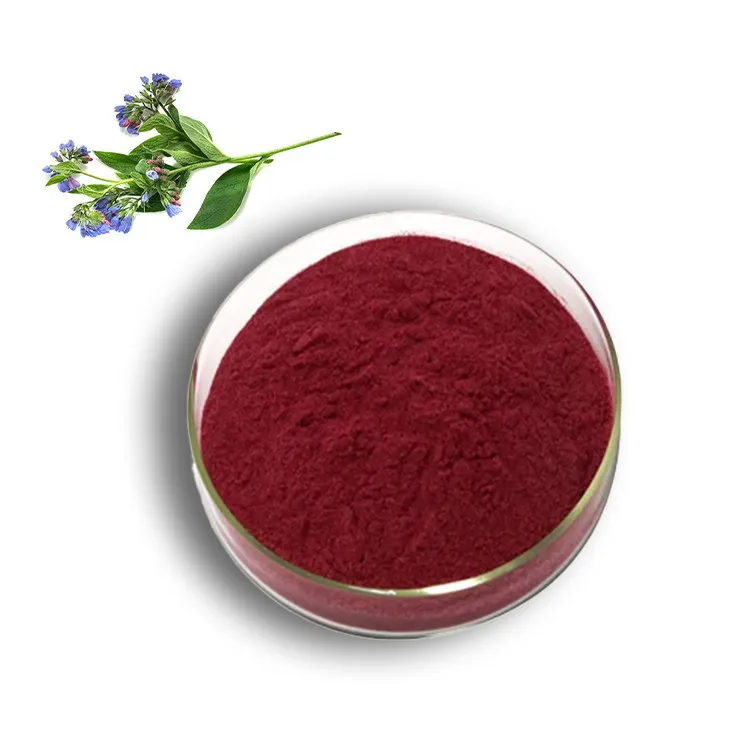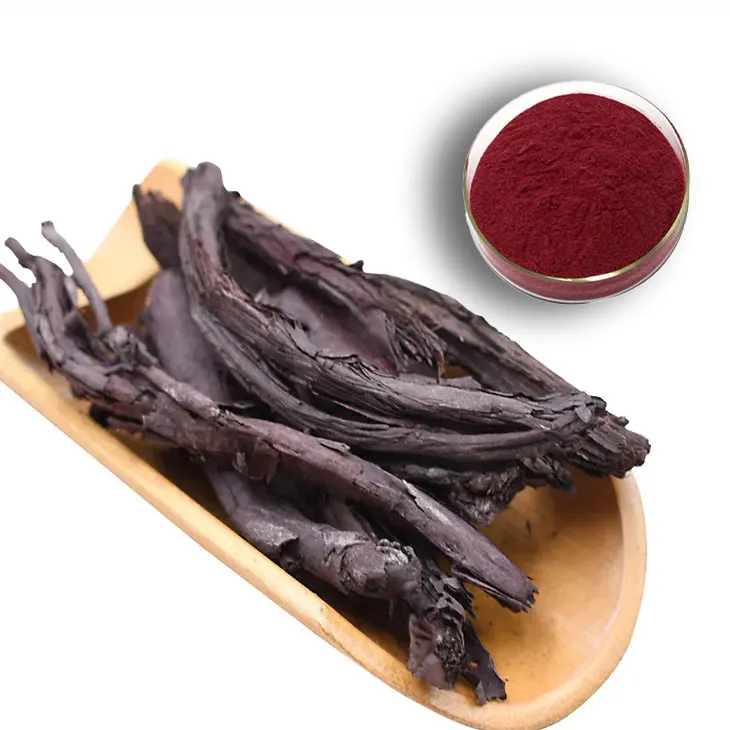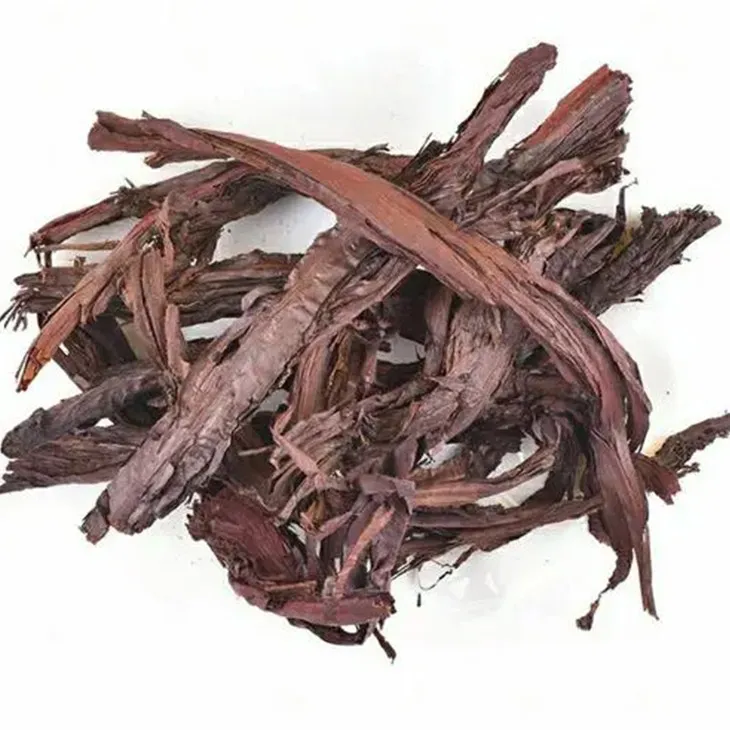- 0086-571-85302990
- sales@greenskybio.com
The process of extracting acetylshikonin from Lithospermum erythrorhizon extract.
2024-11-30

1. Introduction to Lithospermum erythrorhizon and AcetylShikonin
Lithospermum erythrorhizon is a medicinal plant of great significance. It has been used in traditional medicine for various purposes. AcetylShikonin, which can be extracted from Lithospermum erythrorhizon extract, has attracted much attention due to its potential pharmacological properties. The extraction of acetylShikonin is not only of scientific interest but also has practical implications in the fields of medicine, cosmetics, and natural product research.

2. Obtaining Lithospermum erythrorhizon Extract
2.1. Plant Collection
The first step in obtaining the extract is the proper collection of Lithospermum erythrorhizon. The plant should be collected at the appropriate time of the year when the content of active compounds, including those related to acetylshikonin, is at its peak. Sustainable collection practices should be followed to ensure the long - term availability of the plant.2.2. Initial Extraction
Once the plant is collected, the initial extraction is carried out. There are several methods for this. One common method is maceration, where the plant material is soaked in a suitable solvent for a certain period. Another method is percolation, which involves the slow passage of the solvent through the plant material. The choice of solvent for this initial extraction is crucial as it affects the quality and quantity of the extract obtained. Solvents such as ethanol or methanol are often used as they can effectively extract a wide range of compounds from the plant.
3. Solvent Extraction of Acetylshikonin
3.1. Solvent Selection
Solvent extraction is a key step in isolating acetylshikonin from the Lithospermum erythrorhizon extract. The selection of the solvent is based on its polarity and selectivity towards acetylshikonin. Ethyl acetate is a commonly used solvent for this purpose. It has a suitable polarity that allows it to effectively extract acetylshikonin while minimizing the extraction of unwanted components. Other solvents such as chloroform or dichloromethane may also be considered depending on the specific requirements of the extraction process.3.2. Extraction Conditions
The extraction is carried out under controlled conditions. Temperature plays an important role in the extraction process. Higher temperatures can generally increase the solubility of acetylshikonin in the solvent and thus the rate of extraction. However, too high a temperature may also lead to the degradation of acetylshikonin or the extraction of unwanted compounds. Therefore, an optimal temperature range needs to be determined. Similarly, the extraction time also affects the efficiency of the extraction. Longer extraction times may increase the yield of acetylshikonin, but it may also increase the extraction of other compounds.
4. Purification of Acetylshikonin
4.1. Thin - layer Chromatography (TLC)
After the solvent extraction, the crude extract contains not only acetylshikonin but also other compounds. Thin - layer chromatography (TLC) can be used as an initial purification step. TLC is a simple and fast method to analyze and separate the components in the crude extract. A thin layer of adsorbent material, such as silica gel, is coated on a plate. The crude extract is spotted on the plate, and the plate is then developed in a suitable solvent system. Different compounds in the extract will move at different rates depending on their affinity for the adsorbent and the solvent. This allows for the identification of the position of acetylshikonin on the plate.4.2. Preparative HPLC
For large - scale purification, preparative high - performance liquid chromatography (preparative HPLC) can be employed. Preparative HPLC is a more advanced separation technique. The crude extract is injected into the HPLC system, and the components are separated based on their different retention times in the column. The HPLC system can be optimized by selecting the appropriate column, mobile phase, and flow rate. Based on the spectral characteristics and retention time of acetylshikonin, the pure acetylshikonin fraction can be collected.4.3. Crystallization
Crystallization is another option for further purification of acetylshikonin. A suitable solvent system is selected, and the acetylshikonin is dissolved in it. By adjusting the conditions such as temperature, concentration, and the addition of anti - solvents, acetylshikonin can be crystallized out. The resulting crystals are highly pure acetylshikonin. This method is relatively simple and can be used to obtain a high - purity product.5. Conclusion
The extraction and purification of acetylshikonin from Lithospermum erythrorhizon extract is a complex but well - studied process. Each step, from the initial extraction of the plant to the final purification of acetylshikonin, requires careful consideration of various factors such as solvent selection, extraction conditions, and purification techniques. With the development of new technologies and techniques, it is expected that more efficient and environmentally friendly methods for the extraction and purification of acetylshikonin will be developed in the future, which will further promote the application of acetylshikonin in various fields.
FAQ:
What are the initial extraction methods for Lithospermum erythrorhizon extract?
The passage doesn't specifically mention the initial extraction methods for Lithospermum erythrorhizon extract. However, common extraction methods for plant extracts may include maceration, percolation, or Soxhlet extraction. But for a more accurate answer, further research would be needed.
Why is ethyl acetate a suitable solvent for extracting acetylshikonin?
Ethyl acetate is a suitable solvent for extracting acetylshikonin because it has a suitable polarity. This polarity allows it to effectively extract acetylshikonin while minimizing the extraction of unwanted components.
How does temperature affect the extraction of acetylshikonin?
Temperature affects the extraction of acetylshikonin in two main ways. First, it can influence the solubility of acetylshikonin in the solvent. Second, it can change the rate of extraction. Higher temperatures may generally increase the solubility and the rate of extraction, but it needs to be controlled carefully to avoid degradation or extraction of unwanted substances.
What is the role of Thin - layer chromatography (TLC) in the purification of acetylshikonin?
TLC serves as an initial step in the purification of acetylshikonin. It provides a simple and fast way to analyze and separate the components in the crude extract. By doing so, it can identify the position of acetylshikonin, which helps in further purification steps.
How does preparative HPLC purify acetylshikonin?
Preparative HPLC purifies acetylshikonin by allowing the collection of the pure acetylshikonin fraction based on its retention time and spectral characteristics. Different components in the extract have different retention times and spectral properties in HPLC, and by using these features, the pure acetylshikonin can be separated and collected.
Related literature
- Extraction and Purification of Shikonin and its Derivatives from Lithospermum erythrorhizon: A Review"
- "Studies on the Solvent Extraction of Acetylshikonin from Lithospermum erythrorhizon Extract"
- "Advanced Purification Techniques for Acetylshikonin Isolated from Lithospermum erythrorhizon"
- ▶ Hesperidin
- ▶ Citrus Bioflavonoids
- ▶ Plant Extract
- ▶ lycopene
- ▶ Diosmin
- ▶ Grape seed extract
- ▶ Sea buckthorn Juice Powder
- ▶ Fruit Juice Powder
- ▶ Hops Extract
- ▶ Artichoke Extract
- ▶ Mushroom extract
- ▶ Astaxanthin
- ▶ Green Tea Extract
- ▶ Curcumin
- ▶ Horse Chestnut Extract
- ▶ Other Product
- ▶ Boswellia Serrata Extract
- ▶ Resveratrol
- ▶ Marigold Extract
- ▶ Grape Leaf Extract
- ▶ New Product
- ▶ Aminolevulinic acid
- ▶ Cranberry Extract
- ▶ Red Yeast Rice
- ▶ Red Wine Extract
-
Sophora Flavescens Root Extract
2024-11-30
-
Beetroot Powder
2024-11-30
-
Elderberry Extract
2024-11-30
-
White Peony Extract
2024-11-30
-
Okra Extract
2024-11-30
-
Saffron Extract Powder
2024-11-30
-
Peppermint Extract Powder
2024-11-30
-
Curcuma Longa Extract
2024-11-30
-
Ginger Extract
2024-11-30
-
Resveratrol extract
2024-11-30





















